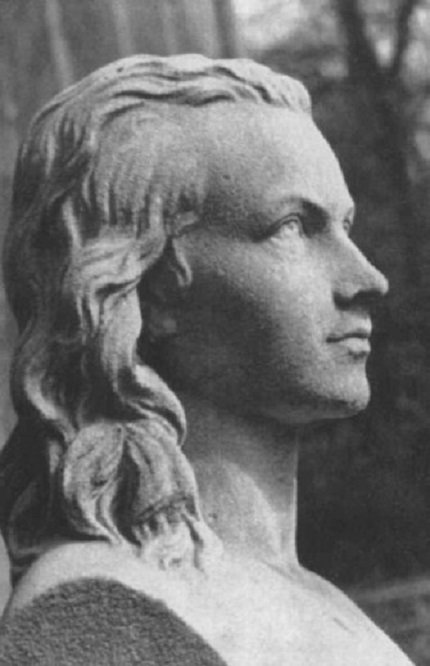In the fragments of Novalis we find a remarkable theoretical zeal to define the place of poetry among other arts. Poetry is the prose among the arts. Words are acoustic configurations of thought. For man, poetry is what is the chorus of the Greek drama - a way of acting the beautiful, rhythmic soul - a voice that accompanies our creative construction . Poetry is totally what is the sculpture for the outer, imagined world and the music of the tones. The effect is its diametric opposite, as far as it is plastic, but still there is musical poetry that brings the soul itself into a multifaceted game of oscillation. .
The poet must have the ability to read the thoughts of others, and also to present the whole variety of thoughts with a variety of means of expression. As a musician can reproduce different tones and instruments in his soul, he moves them and connects them in different ways, so that he becomes the living spirit of these sounds and melodies, as well as the painter as a master and creator of dyed images knows to change them in their own taste, to counter them and to compare them, to multiply them, to recreate them in all possible varieties and separately for themselves, so the poet must be able to imagine the speaking spirit of all the objects and actions in its differences etc. to possess all sorts of speech, and to inspire them with a special and distinct meaning ... During the age of Romanticism, interest in the original poetics of the tale grew. In fragment 1258, Novalis sets out his theoretical insights into the tale, which he has already defined as the "canon of poetry" in the previous fragment: "In the true story, everything must be unusual, mysterious and unrelated, everything breathe life ... The world of fairy tales is a world diametrically opposed to the world of truth, and that is why it is so much like it, as chaos is like the perfect creation ... The true story must be both a prophetic image, an ideal image, absolutely necessary IMO image. The true creator of the fairy tale is a clairvoyant of the future.
The tale favors the liberal-minded romanticist theorist in Germany because" it has a real natural anarchy. Novivalis as a poet ( Hymns to the Night): The Collection of Novalis " Hymns to the Night" appears in the latest issue of the literary magazine "Atheneum" published in 1797 by the Roman romanians. It is composed of some lyrical musical rhapsodies, which also include sequences of rhyming poems. The romantic poet attributes to this collection an obvious advantage of the musical suggestion of rhythmic prose before the rational expression of feelings in the strictly rhymed lyrics. Novalis emerges as a complete romantic poet mostly through the insightful lyrical exploration of the unity of the world that is buried under its illusory diversity. Guided by his intense deep emotional stress intuition, he seeks beyond the radiant reality of the day in the darkness of the night the mystical messages of the Creator of this unity. The name of his beloved Sophie acquires a new meaning for him, perhaps under the influence of the divinatory insights of the late medieval German thinker Jacob Böhm, who names the Greek name Sofia the God's Wisdom, raised up as the sole purpose of mystical ascension.

